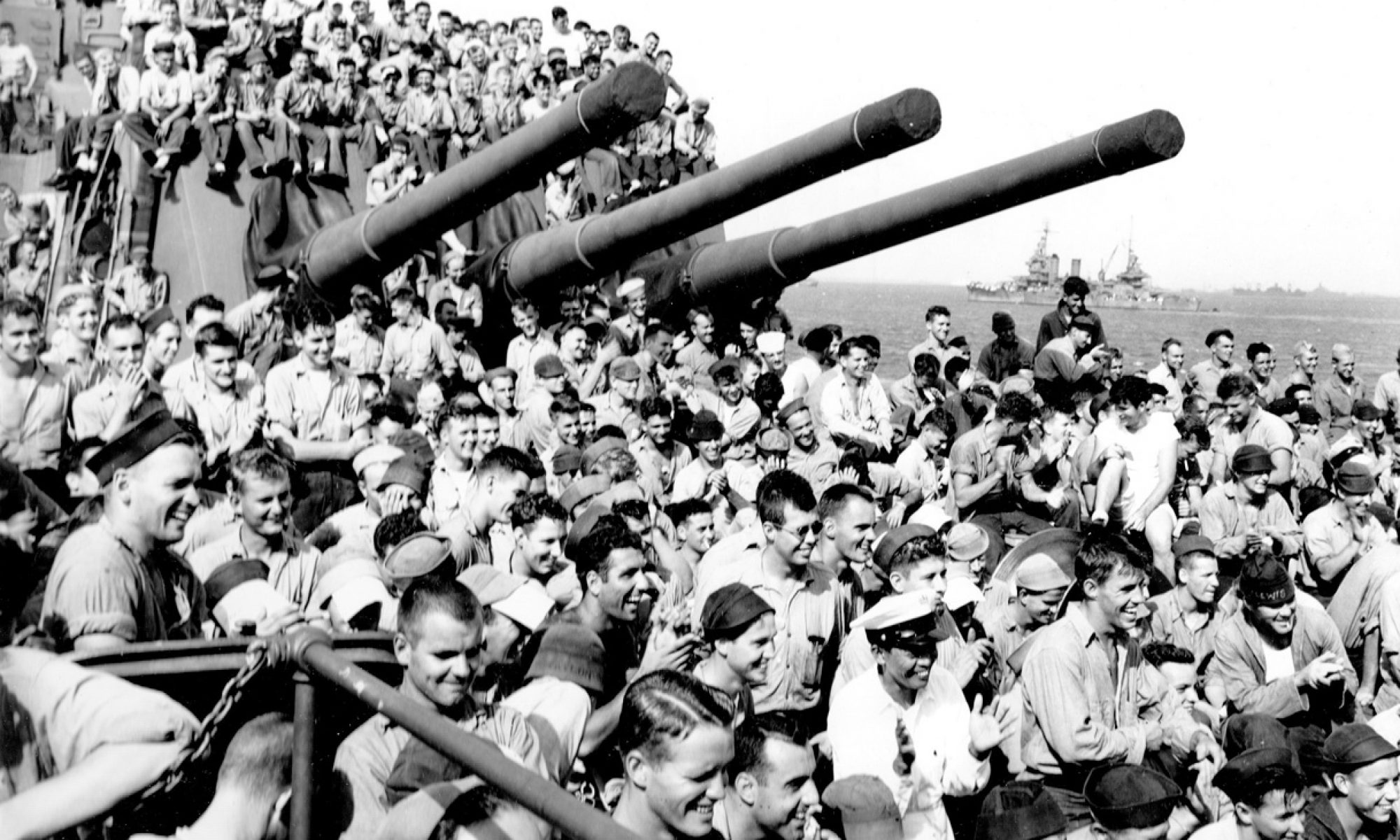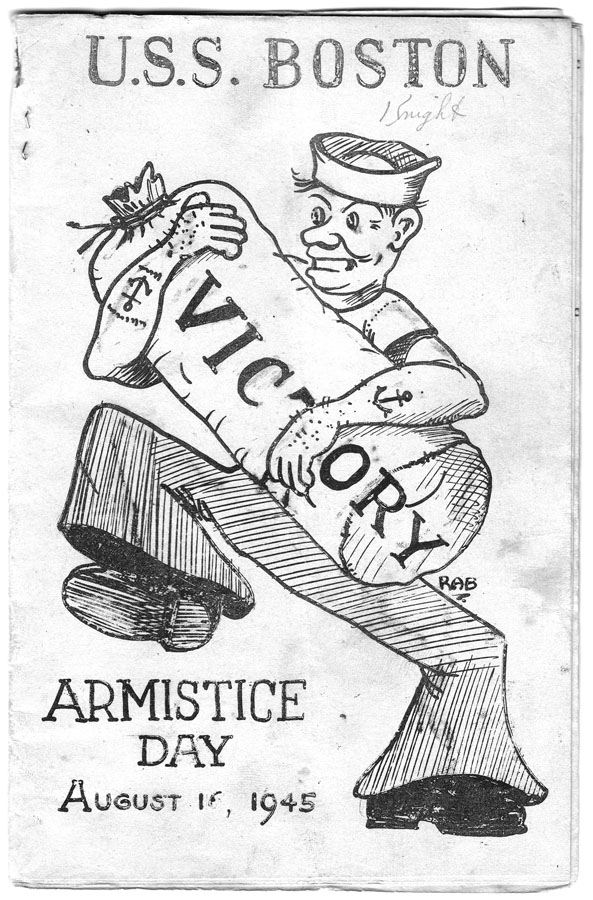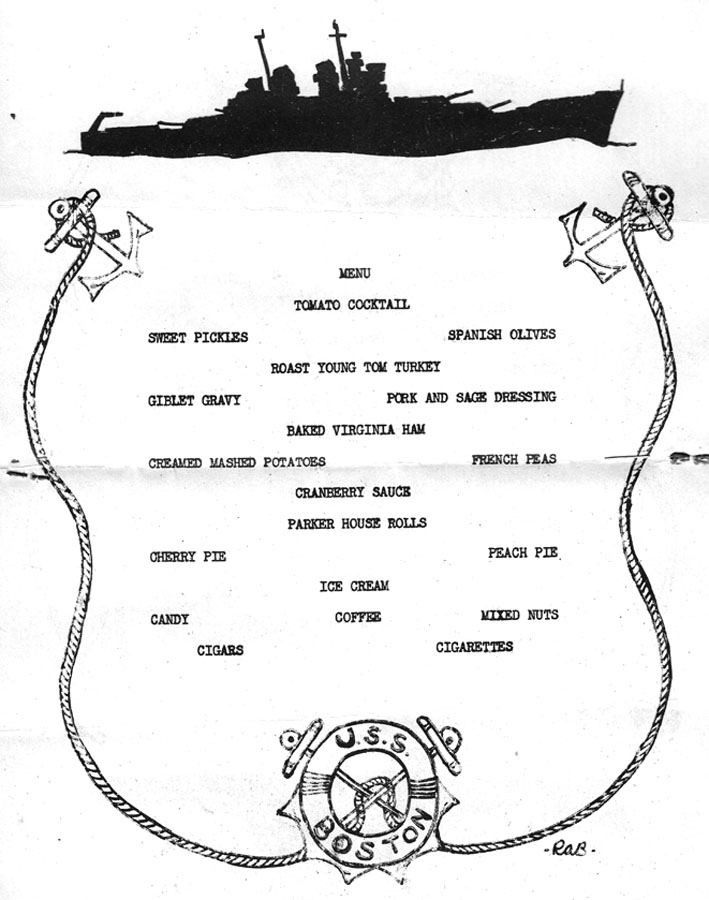10/10/2014
After spending the entire month of September ranging off the Philippines participating in “Operation King”, the Boston spent the last couple of days anchored in the lagoon at Eniwetok. On Oct. 1, the ship, a unit of Task Group 38.1, embarked on a continuation of Operation King. The focus of this phase of the operation was to keep hitting Japanese supply areas such as Okinawa and Iwo Jima and Formosa (Taiwan) from which planes, troop transports and supplies were launched to fight the invading Americans up and down the Philippines.
They immediately were in foul weather, and found themselves in another typhoon between 10/2 and 10/8.
Frank Studenski, writing in his War Diary (October 7, 1944): We are still in the typhoon, it is rough walking, the ship is rolling 20 to 25 degrees. We are eating sandwiches and coffee. I went up in the superstructure and had a good views of the rolling ship and the rough sea. The waves are about 20 – 25 feet high. And, (October 8, 1944): Today the sea is calmer, we made a 32 degree roll yesterday. We are back to eating regular meals.
The ships were able to refuel on the 9th and continue their mission in the Philippine Sea: (October 10, 1944): This morning planes were launched to bomb Jap bases in the Okinawa Islands. The group of islands are located south of the Jap mainland. We are about 250 miles from Japan. This is the farthest the task force has gone. The China coast is about 250 miles to the north. There has not been any enemy planes in the air. This morning we caught them by surprise. So far one heavy cruiser and one light cruiser, a destroyer and an A.K. were sunk. There is quite a bit of shipping in the harbor. About a hundred planes have been destroyed so far.


